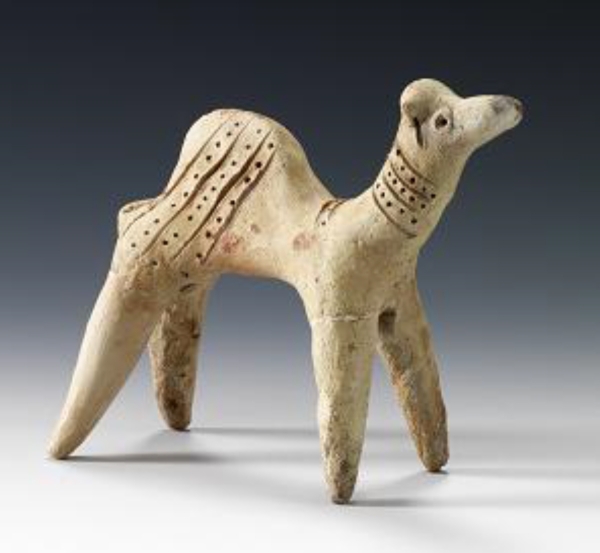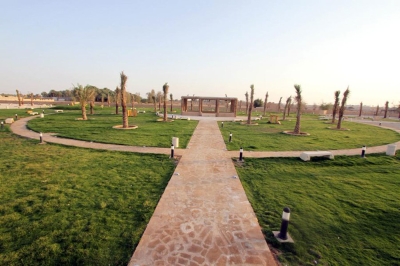
The Clay Camel Figurine is an archaeological figurine made in the shape of a camel using medium‐coarse red clay. It was found during excavations in the archaeological Qaryat al-Faw, located southeast of Wadi ad-Dawasir Governorate, Riyadh Province, Kingdom of Saudi Arabia.
Description of the figurine
The head of the camel figurine is crafted in small size from medium‐coarse red clay with circular eyes pierced by shallow, non-through depressions and raised upward. It has two small ears, an erect and slightly bulging neck, and a massive hump shaped like an arch. Its abdomen is narrow and its tail is curved. The figurine has lost its right foot and left hand. The surface displays a lining in a grayish-green hue interspersed with small scars. On the neck, there are four recessed lines encircling it, between which three lines composed of successive small engraved circles appear. Additionally, two engraved lines are visible on the upper part of the neck, between which is a line of successive small engraved circles. On the camel’s body, four obliquely arranged engraved lines extend from the hump to the hip and curl toward the opposite side, and beneath each ear there is a deep depression.
Dimensions of the figurine
Height: 15.3 cm.
History of the figurine
The dating of the small camel figurine is between the third century BCE and the third century CE.
The figurine is preserved at the Museum of the Archaeology Department at King Saud University in Riyadh City and is registered under number 11 Q 26. It is one of the archaeological pieces selected to participate in the Saudi Archeological Masterpieces Through the Ages Exhibition, held at the Louvre Museum in the French capital, Paris, in 2010. The exhibition featured three hundred pieces of varied materials and eras, original artifacts from different regions of Saudi Arabia, classified into three historical groups: Pieces from the prehistoric ages, pieces from the pre-Islamic period, and pieces from the Islamic eras. The artifacts related to Saudi heritage encompassed various fields: Social, cultural, and economic.
The discovery of the clay camel figurine is one of the outcomes of the archaeological survey and excavation work carried out by the antiquities and museums sector in Saudi Arabia over recent years, as part of the efforts of Saudi archaeologists, scientific missions, and specialized research teams.
Significance of the figurine
Such figurines are made using the pulling technique when the clay mass is soft, and they are often decorated with simple ornamental designs, some of which represent tribal insignia. Camels played vital roles in the societies of the Arabian Peninsula; they are entities with historical symbolism, not only because they are an important source of food but also as a primary means of transportation for people, goods, and supplies. Consequently, they have attracted the attention of artists throughout history, becoming one of their favorite subjects, and inscribed their names on them as a form of ownership.
Related quizzes
Related articles

